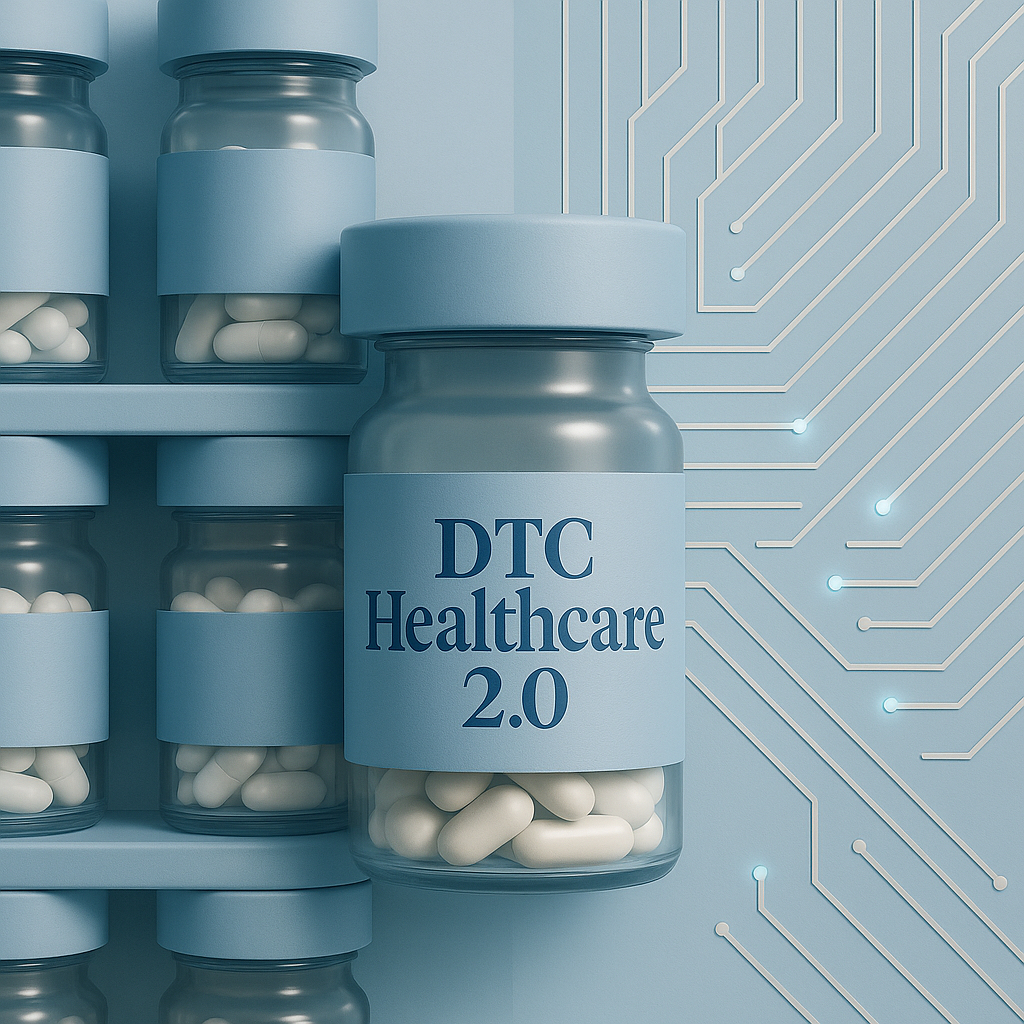
DTC 1.0 proved there was demand. DTC 2.0 will extend that into treatment.
What DTC Healthcare 1.0 Demonstrated
Brands like Hims & Hers, Ro, and Evernow showed that consumers want fast, convenient online prescriptions. They proved healthcare could feel like e-commerce—frictionless and on-demand.
But DTC 1.0 was defined by retail math: ad spend, acquisition, and brand growth. It worked for selling prescriptions, but it stopped at access, not treatment. And like most retail brands, it never owned the infrastucture.
The True Milestone
The real breakthrough wasn’t the brands themselves but the signal they sent: consumers want healthcare that is digital, simple, and fast. DTC 1.0 was judged on retail math. DTC 2.0 will be judged on outcomes math—how well treatment works, how long patients stay engaged, and how effectively chronic care scales.
Where Real Innovation Lies
The future won’t be defined by marketing efficiency. It will be built on platforms that fuse AI, connected devices, and secure health data—integrating diagnostics, labs, and treatment workflows into the infrastructure healthcare has been missing.
DTC Healthcare 2.0: Platform-Centric Success
By embedding labs, titration, follow-ups, and monitoring into software, platforms unlock the drivers of sustainable growth:
- Retention: patients engaged for years, not weeks.
- Recurring revenue: steady cash flows from labs, prescriptions, and monitoring.
- Scalability: thousands of doctor-led brands thriving with lower acquisition costs.
Just as AWS let e-commerce scale without reinventing infrastructure, platforms will let healthcare brands flourish without rebuilding clinical systems from scratch.
Platforms as Sustainable Growth Engines
Platforms create compounding advantages: treatment workflows, lab integrations, AI-driven protocols, and longitudinal data. These embedded capabilities raise switching costs, deepen network effects, and build a growth engine retail marketing alone can’t achieve.
The Takeaway
DTC 1.0 proved consumers would buy medications online like any other retail product. But it also exposed the limits of retail math.
- Brands spark demand.
- Platforms capture demand, deliver treatment, and scale it.
DTC 1.0 showed consumers would shop for medications like e-commerce.
DTC 2.0 will turn that demand into treating complex, long-term conditions — with platforms as the foundation.
Learn more at http://clinical-erp.com